Based on your code, you're trying to add a shadow on top of Mapbox.
For that, apart from the suggestions from @Mugen87, you'll need to create a surface to receive the shadow, and place it exactly below the model you're loading, considering also the size of the object you're loading to avoid the shadow goes out of the plane surface... and then you'll get this.

Relevant code in this fiddle I have created. I slightly changed the light and I added a light helper for clarity.
var customLayer = {
id: '3d-model',
type: 'custom',
renderingMode: '3d',
onAdd: function(map, gl) {
this.camera = new THREE.Camera();
this.scene = new THREE.Scene();
const dirLight = new THREE.DirectionalLight(0xffffff, 1);
dirLight.position.set(0, 70, 100);
let d = 1000;
let r = 2;
let mapSize = 8192;
dirLight.castShadow = true;
dirLight.shadow.radius = r;
dirLight.shadow.mapSize.width = mapSize;
dirLight.shadow.mapSize.height = mapSize;
dirLight.shadow.camera.top = dirLight.shadow.camera.right = d;
dirLight.shadow.camera.bottom = dirLight.shadow.camera.left = -d;
dirLight.shadow.camera.near = 1;
dirLight.shadow.camera.far = 400000000;
//dirLight.shadow.camera.visible = true;
this.scene.add(dirLight);
this.scene.add(new THREE.DirectionalLightHelper(dirLight, 10));
// use the three.js GLTF loader to add the 3D model to the three.js scene
var loader = new THREE.GLTFLoader();
loader.load(
'https://docs.mapbox.com/mapbox-gl-js/assets/34M_17/34M_17.gltf',
function(gltf) {
gltf.scene.traverse(function(model) {
if (model.isMesh) {
model.castShadow = true;
}
});
this.scene.add(gltf.scene);
// we add the shadow plane automatically
const s = new THREE.Box3().setFromObject(gltf.scene).getSize(new THREE.Vector3(0, 0, 0));
const sizes = [s.x, s.y, s.z];
const planeSize = Math.max(...sizes) * 10;
const planeGeo = new THREE.PlaneBufferGeometry(planeSize, planeSize);
const planeMat = new THREE.ShadowMaterial();
planeMat.opacity = 0.5;
let plane = new THREE.Mesh(planeGeo, planeMat);
plane.rotateX(-Math.PI / 2);
plane.receiveShadow = true;
this.scene.add(plane);
}.bind(this)
);
this.map = map;
// use the Mapbox GL JS map canvas for three.js
this.renderer = new THREE.WebGLRenderer({
canvas: map.getCanvas(),
context: gl,
antialias: true
});
this.renderer.autoClear = false;
this.renderer.shadowMap.enabled = true;
},
render: function(gl, matrix) {
var rotationX = new THREE.Matrix4().makeRotationAxis(
new THREE.Vector3(1, 0, 0),
modelTransform.rotateX
);
var rotationY = new THREE.Matrix4().makeRotationAxis(
new THREE.Vector3(0, 1, 0),
modelTransform.rotateY
);
var rotationZ = new THREE.Matrix4().makeRotationAxis(
new THREE.Vector3(0, 0, 1),
modelTransform.rotateZ
);
var m = new THREE.Matrix4().fromArray(matrix);
var l = new THREE.Matrix4()
.makeTranslation(
modelTransform.translateX,
modelTransform.translateY,
modelTransform.translateZ
)
.scale(
new THREE.Vector3(
modelTransform.scale,
-modelTransform.scale,
modelTransform.scale
)
)
.multiply(rotationX)
.multiply(rotationY)
.multiply(rotationZ);
this.camera.projectionMatrix = m.multiply(l);
this.renderer.state.reset();
this.renderer.render(this.scene, this.camera);
this.map.triggerRepaint();
}
};


